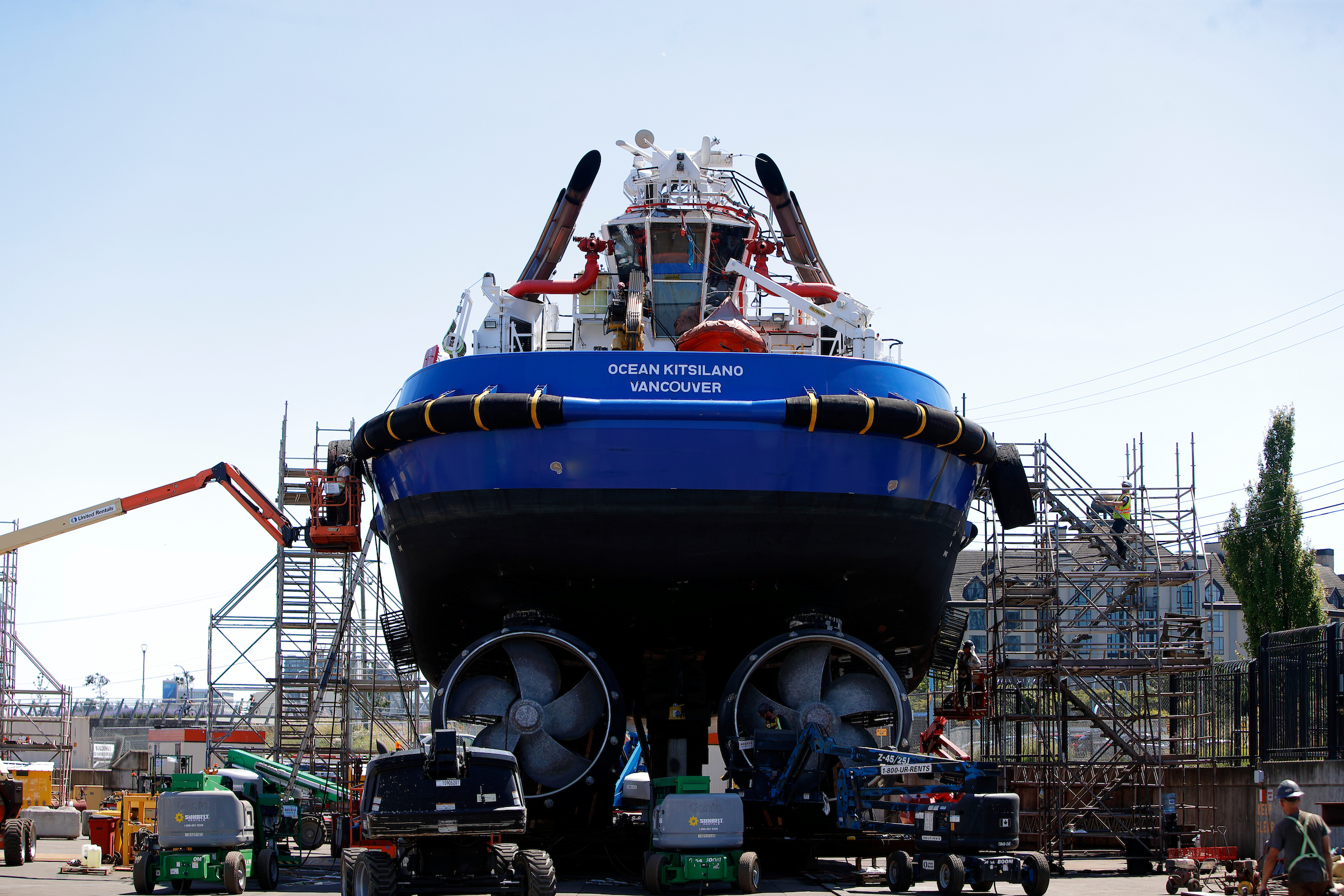Despite the current global economic uncertainty, the maritime economy on Canada’s West Coast is growing, companies are expanding and along with them the workhorses of the sector are having to do the same.
The fleet of tugboats that work off the B.C. coast, critical in ensuring the multi-billion-dollar maritime economy runs smoothly, are being tasked to do more, take on more responsibility, and ensure they are ready for action.
According to the federal government there are more than 1,100 tugboats working in B.C. waters providing essential services including towing log booms and barges, ensuring port operations run smoothly by helping larger ships maneuver in tight quarters, escorting vessels with hazardous material and helping ships navigate narrow channels. The tugs keep the economy rolling.
The Port of Vancouver recently released annual statistics showing a record 158 million metric tonnes of cargo worth more than $300 billion moved through the port last year, a five per cent increase over 2023.
Stuart Jones, Director of Technical Operations for SAAM Towage, a Chilean company with 26 tugboats in B.C. and more than 200 at operations around the Americas, said most people don’t appreciate the size of the shipping industry and impact it has on B.C. until there is an event that causes a shortage. He said in the last few years, the province has dealt with major situations, like Covid-19, the breakdown of supply chains, and the atmospheric river that severely disrupted transportation networks. All of that underlined the need for a fleet of reliable tugs on the coast. Jones said a priority for SAAM was to make sure that they had the support in place to ensure they could operate seamlessly.
That can be a daunting challenge for the fleet of tugs, one that would be impossible to tackle without companies having strong relationships around the region with shipyards that can accommodate emergency repairs, regular maintenance and every so often conjure up a little magic.
Ocean Group, a company active on both Canadian coasts, recently added five tugs to its B.C. fleet and now has eight vessels in the area. For Ocean Group, its partnership with Point Hope Maritime in Victoria was critical to increasing its West Coast presence.
Olivier Garon, Director of Fleet Maintenance for Ocean, said his goal was to develop a reliable partnership that could accommodate their needs, and they found it with Point Hope and General Manager Riccardo Regosa. “It’s essential for the day-to-day, but they have been so cooperative with everything from emergency repair to mandatory dry dock,” he said, adding that in the 20 years he has spent working in the maritime industry, he would say Point Hope is “one of the most qualified and devoted shipyards I have seen.”
Garon said what sets Point Hope Maritime apart is the ability to handle big jobs while remaining small and nimble enough to pivot and find innovative solutions to unforeseen problems. “They go above and beyond to achieve, sometimes, the impossible,” he said, noting there was a time they developed an innovative solution using air bags to float a large vessel and get it into dry dock when Mother Nature was being uncooperative with the tides.
Jones agrees saying it’s that kind of quick thinking that is essential to keeping operations humming. “In the tugboat industry, there’s a bit of a saying; ‘there’s no such thing as a spare vessel,’” he said. “So, every time you take one down to a shipyard, it’s key that you get in, get the work you need done and you’re out as quickly as possible.”
Jones said SAAM’s relationship with Point Hope has ensured their vessels are on the water more often than not. He said the highly regulated industry requires constant maintenance and vigilance in upkeep of the vessels and Point Hope is able to handle the workload.
“That’s where the shipyards come into play, and we need them. And we need them at short notice,” he said, noting that strong relationship has translated into the ability to address emergency issues whenever they arise. “It’s about having a good customer-client relationship willing – even on short notice – to finds ways to move the schedule to make everyone happy.”
Jones also noted the uniqueness of each tugboat with their different shapes, sizes, equipment, and weight, which can present a challenge to the shipyard. They are also constantly innovating and trying new equipment – SAAM recently put into service two electric tugs in Vancouver for example.
“Sharing our needs is something that we’ve worked on with Riccardo over the years,” he said, noting their relationship has meant open communication about technological change, and the shipyard has always been able to match them and accommodate.
Tugboat companies have to stay on the cutting edge of technology to keep up with regulations, environmental, and otherwise, as well as meeting the expectations of their own clients.
Garon agreed, noting Point Hope also has the advantage of being an integrated company within the Ralmax Group of industrial firms. He said that gives the shipyard access to an engineering department, fabrication shop, and other facilities that may be needed.
“Having such a department like engineering in house helps the client to sometimes achieve the quality and conformity (required by Transport Canada),” he said. Garon said having a vessel in dry dock can be expensive, so it’s essential the shipyard is always in communication about what’s happening.
“When you have such a project, sometimes you can spend $1 million in dry dock, so it’s all about the start of the project from the scope of work to the conditions,” he said, adding Point Hope has a reputation for attention to detail, high standards both in their work, corporate culture, and commitment to the environment.
Garon advised that its important to be working with a company that maintains those high standards, because if they are paying attention to that kind of detail, you can bet they are paying close attention to what they do on your ship.





